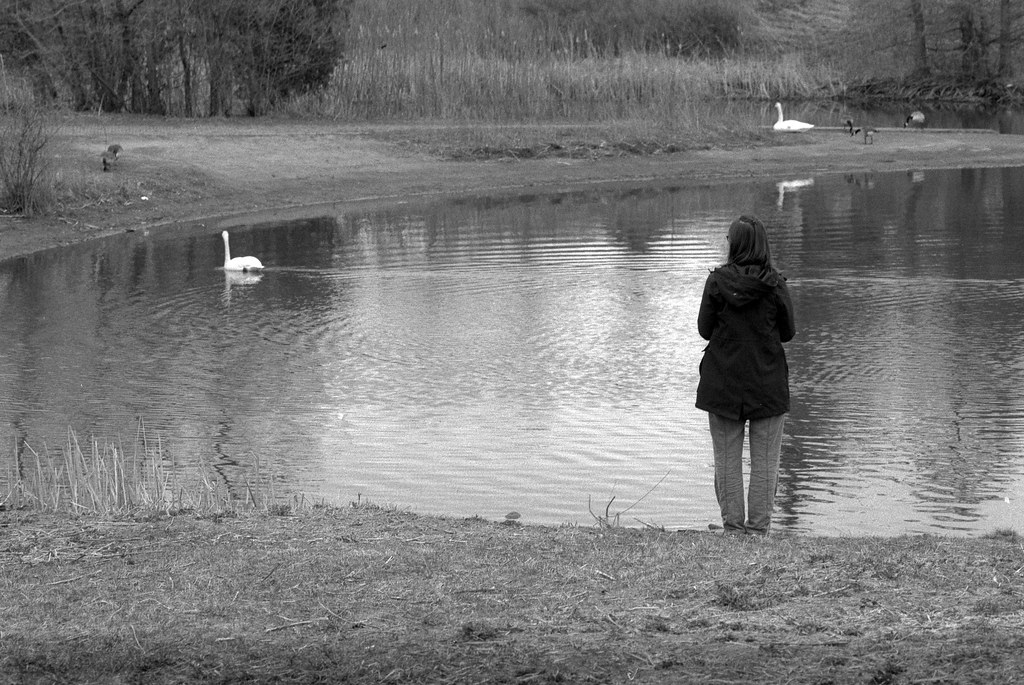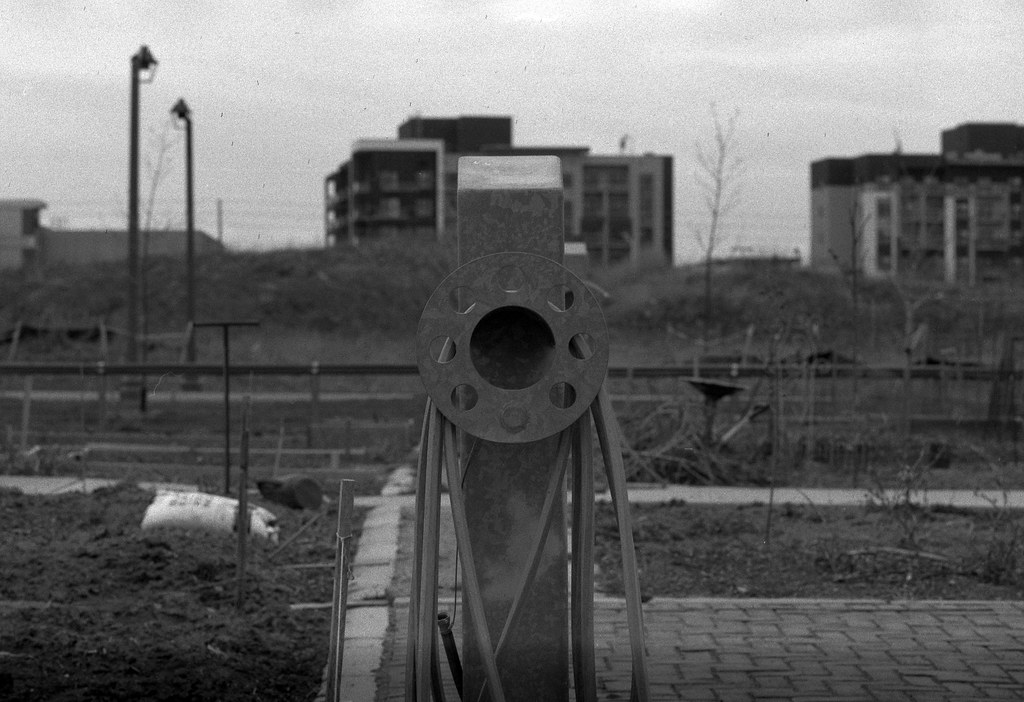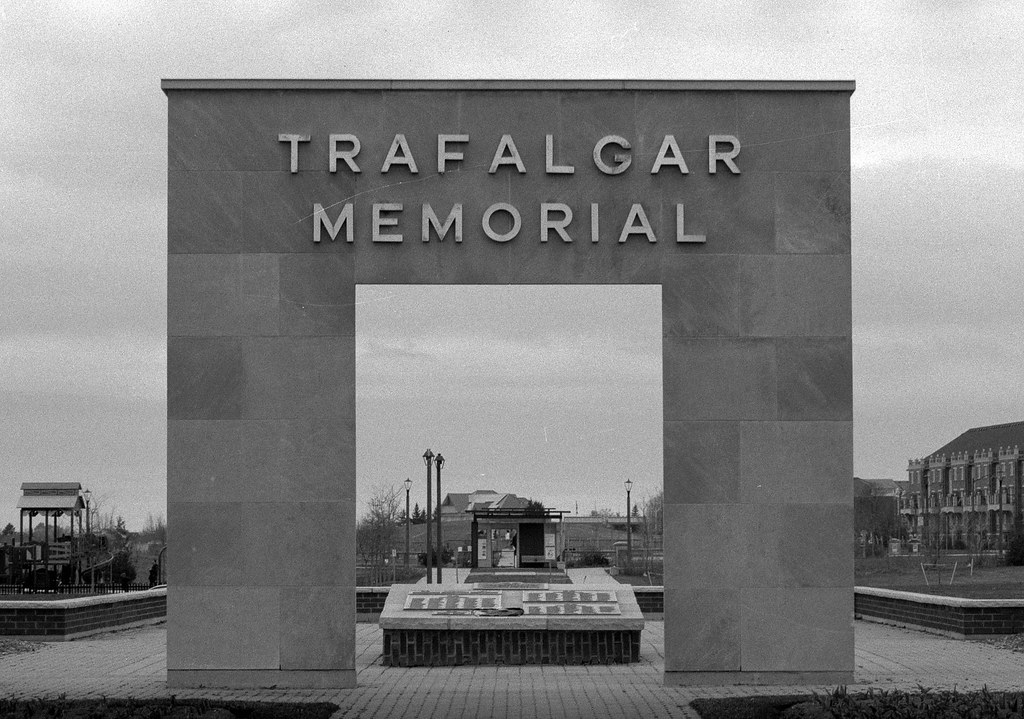Often you’ll drive past a space constantly and always think, I should stop here one day and explore. That is exactly what this week’s location is all about. I drive past the Oakville Memorial Park every day going to and from work and always think to myself; I should stop here. So I made an effort to check the space out one day at lunch. Being close to the campus and offering up wide-open spaces, I decided to walk the park’s entire length and discovered that it has a far longer history than a park.

I honestly did not think I would have any history to discuss for this week. I always thought the area was dedicated to the war dead of Trafalgar Township. Actually, there is far more to the area than I first thought. Trafalgar Township dates back to the surveys completed by Samuel Street Wilmot following a vast land purchase from the Mississaugas of the Credit in 1805; Street divided the land into three townships, Trafalgar taking its name from the British naval victory at the Battle of Trafalgar that saw Admiral Horatio Nelson defeat a combined French and Spanish naval force. The first settlers arriving in 1807 using the main colonization route, the Dundas Road. The park is situated today is part of two former lots, designated Lots 14 and 15, each originally divided out to 200 acres of land. Amelia (or Aurelia) Jones gained the grant for Lots 14 in 1808, although history is fuzzy if the Jones’ settled on the land as it changed hands multiple times throughout the 19th Century. However, the area did gain some settlement and took Munn’s name, with a church, cemetery, and school all being built and used throughout the 19th and 20th Centuries. The Church and Cemetery still stand in use today at the intersection of Sixth Line and Dundas Street. The Hayes family acquired the property in the 19th Century and raised cattle. Under the Hayes family, a brick farmhouse, bunkhouse for hired hands, several barns, and an auction house would eventually make up the vast property. The Hayes family became renowned for the cattle business, and three members of the family were inducted into the Canadian Agriculture Hall of Fame. Former MP, the Honourable Barbara Sullivan, grew up on the farm and represented Halton Centre in the House of Commons, serving in that role from 1987-1995. The Trafalgar memorial, located on the property, honours the war dead of the former township during the First and Second World Wars and Korea. The township being absorbed into Milton and Oakville in 1974 with the creation of the Regional Municipality of Halton. All the former farm properties were taken over and redeveloped in the early 2000s, which continues today. The only surviving remains of the village of Munn is a United Church and the cemetery.


While I managed to shoot the entire roll of 36 during my visit to the park, I ended up keeping less than half the images. The trouble with these spaces is that there isn’t much in the way of variety, and I think that is what helped me decide on a longer rather than wider lens. While I’m not a landscape photographer, it is what I had to work with that day. I chose images based on the park, being the featured image, then the next two based on things to see being water features with a woman watching and a swan swimming. I photographed these two frames back-to-back. The second two are of a community garden present in the park, a nice touch given the agricultural history of the location. The final two are of the Trafalgar Memorial to the township’s war dead and one of the main reasons I ended up here. The arch was the primary and a detailed shot of makeshift crosses and poppies that littered the memorial engraved with names of those killed or missing in action.


I made a point to make this week a mono-lens week to help reduce the amount of kit I needed to bring. I didn’t even bring a camera bag along with me. While the obvious choice would have been a 35mm or 50mm lens, I decided to change things up a little. I ended up going with the legendary 105mm f/2.5 lens offering up a good short telephoto option. And I have to say I think I made the right choice. I was able to capture people, some animals and plenty of detail that would have gotten lost with anything wider. For the first time in this particular cycle, I also over-exposed the Fomapan 200 to ASA-160, not even a stop, but I’m still happy with what I got. I still maintained a fast enough shutter speed (between 1/125″ and 1/250″) to eliminate any camera shake due to the focal length and still have a decent depth of field and having that longer lens helped isolate my subjects. For the developer, I went with Adox Rodinal, not always my first choice with Fomapan 200. However, in this case, the 1+50 dilution did an excellent job, and the overcast skies still offered up enough light to give excellent images. The grain ended up being a little crunchy, but overall I’m okay with the images.


The provincial government decided to lock us down (again) so I’m sticking around in Halton and headed back to the Niagara Escarpment to check out the Kelso Summit.